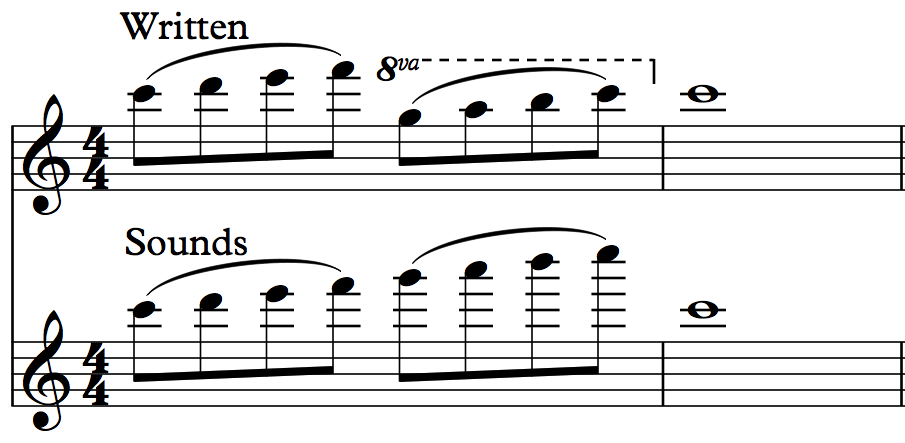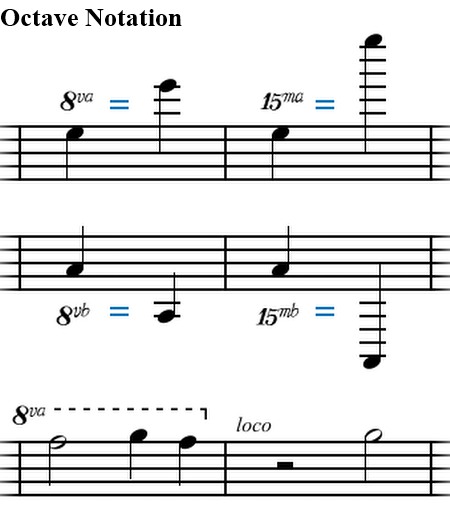Octave ClefsEven with the freedom to move the C, F and G clefs around on the five line staff, occasionally the musical line, or a section of it, is still either too high or low to fit neatly within it.
One way to overcome this, which I am certain we are all familiar with, is to move the musical line up or down by an octave or two.
Here is an example of an octave shift upwards:

The
ottava symbols
8 or
8va are used in music to instruct performers that certain notes are intended to be executed an octave higher or lower than their written pitch.
This is, as we have seen, particularly useful when the range of the notes greatly exceeds the capabilities of the staff, for a given clef.
While the vast majority of classical music uses, in most cases, simply the number
8, it is very common to see
8va as in the illustration above.
No prizes for spotting where this extract is from.
In the Italian language,
8va is simply the shorthand written form for the ordinal
ottava.
In exactly the same way, we use in English
8th as the shortened form for the term
eighth,
8va means play an
octave higher than writtenas you see in the illustration above.
Whereas
8vb or 8ba means play an
octave lower than writtenlike this
 15ma
15ma means play
two octaves higher than writtenThe musical command 15ma, or “quindicesima”, which means a fifteenth, indicates a note or series of notes will be played two octaves higher than written.
while
15vb or 15ba means play
two octaves lower So the music is read at one octave but played and sounds at another.
An 8 or 8va will always be placed
above the notes on the staff, to indicate raising the notes by an octave, and equally an 8 or an 8vb or an 8ba will always be placed
below the notes on the staff when indicating that they should be played an octave lower, as shown in the example above.
The musical symbol 8vb, which is an abbreviation of ottava bassa, or “low octave”, {also ottava sotto, “an octave under” (Italian)} is an indication to play notes an octave lower than written on the staff.
8vb, as we have repeatedly stressed, makes the reading and writing of notes off the staff, much easier, as this would otherwise have multiple ledger lines.
8vb can affect a single note, or it may span several measures. In the latter case, it stops at the word loco, or at the end of its dotted, horizontal line. If an entire staff is affected, a tiny 8 will be sitting atop the clef.
In the same way, if you see a 15 instead of an 8, then you play the music two octaves higher or lower, depending on whether the 15 is above or below the clef.
You may find a
double treble clef sign, which means you play the music
two octaves lower, and here is what that double G clef looks like on the score:

Here is an illustration of most of these musical octave instructions, together on the same score:

Now where does the
Octave clef feature in all of this?
We see that in the next Reply.
Peter